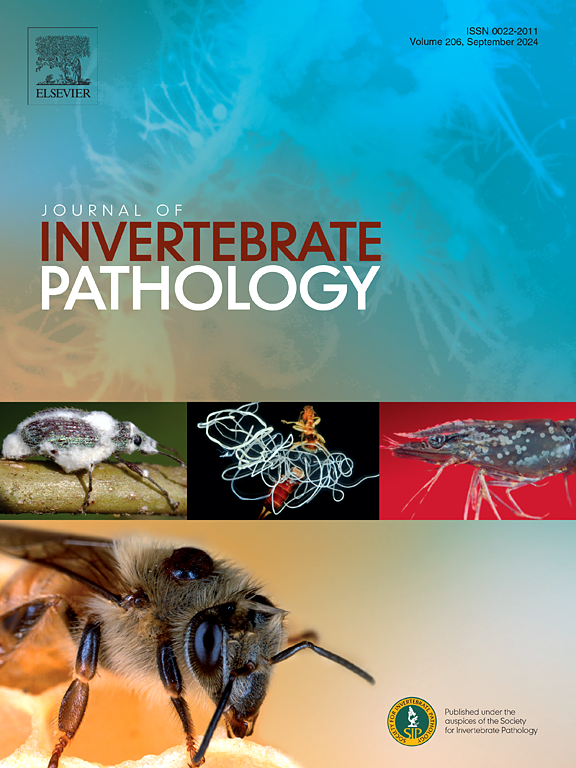Virome of Solenopsis invicta (Hymenoptera: Formicidae): Intercontinental differences in the native and introduced ranges
IF 2.4
3区 生物学
Q1 ZOOLOGY
引用次数: 0
Abstract
A comprehensive survey of 430 Solenopsis invicta nests from 82 different sites in Argentina and the USA was conducted for all currently known viruses infecting, or associated with, the invasive red imported fire ant, S. invicta. Comparisons in viral abundance, diversity, and possible social form preferences were made. Monogyny was the more prevalent S. invicta colony social form detected on both continents. Seventeen of the twenty (i.e., 85%) known viruses associated with S. invicta were observed in Argentina, compared with 11 (55%) viruses detected in S. invicta in the USA. Two viruses, Solenopsis invicta virus-16 (SINV-16) and SINV-17, were not detected on either continent. Seven viruses, SINV-5, SINV-8, SINV-10, SINV-11, SINV-12, SINV-13, and Solenopsis invicta densovirus, were unique to Argentinean S. invicta (i.e., only detected in Argentina) and one virus, SINV-14, was unique to USA S. invicta. The mean number of viruses per nest was significantly (5.4-fold) greater in S. invicta from Argentina compared with S. invicta from the USA. Greater viral diversity and abundance in the native range, Argentina, compared with the introduced range, USA, supports the “enemy release hypothesis” to explain the disparity in S. invicta population levels and pest intensity between the two continents.

无尾绵虫的病毒群(膜翅目:蚁科):本土和引进地区的洲际差异。
对阿根廷和美国82个不同地点的430个invicopsis蚁巢进行了全面调查,发现所有目前已知的感染或与入侵的红色进口火蚁(S. invicta)相关的病毒。比较了病毒的丰度、多样性和可能的社会形式偏好。一夫一妻制是在两个大陆上发现的更普遍的不可征服葡萄群落社会形式。在已知的20种与invicta相关的病毒中,阿根廷发现了17种(即85%),而在美国发现了11种(55%)病毒。在两大洲均未检测到两种病毒,即侵华索理opsis invicta病毒-16 (SINV-16)和SINV-17。7种病毒分别为:svv -5、svv -8、svv -10、svv -11、svv -12、svv -13和invicta浓密病毒,为阿根廷的invicta所特有(即仅在阿根廷检测到),1种病毒为美国的invicta所特有(svv -14)。阿根廷的invicta每个巢的平均病毒数(5.4倍)明显高于美国的invicta。与美国的引进地相比,阿根廷的原生地具有更大的病毒多样性和丰度,这支持了“敌人释放假说”来解释两大洲之间invicta种群水平和害虫强度的差异。
本文章由计算机程序翻译,如有差异,请以英文原文为准。
求助全文
约1分钟内获得全文
求助全文
来源期刊
CiteScore
6.10
自引率
5.90%
发文量
94
审稿时长
1 months
期刊介绍:
The Journal of Invertebrate Pathology presents original research articles and notes on the induction and pathogenesis of diseases of invertebrates, including the suppression of diseases in beneficial species, and the use of diseases in controlling undesirable species. In addition, the journal publishes the results of physiological, morphological, genetic, immunological and ecological studies as related to the etiologic agents of diseases of invertebrates.
The Journal of Invertebrate Pathology is the adopted journal of the Society for Invertebrate Pathology, and is available to SIP members at a special reduced price.

 求助内容:
求助内容: 应助结果提醒方式:
应助结果提醒方式:


